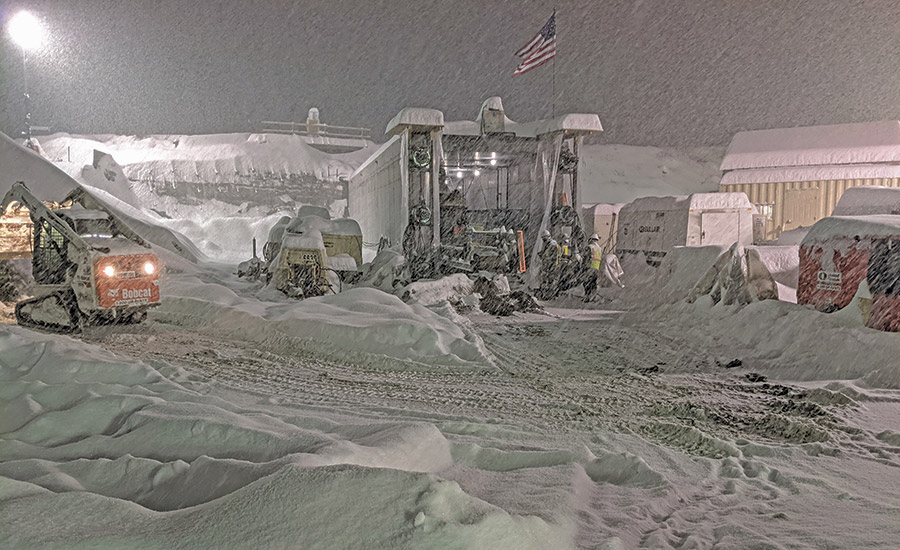Empire Trail Pedestrian Box Tunnel Beneath Active Railroad Lines
Rotterdam Junction, N.Y.
BEST PROJECT and Award of Merit, Safety
OWNER: New York State Dept. of Transportation
LEAD DESIGN FIRM, STRUCTURAL ENGINEER: Brierley Associates Underground Engineers PLLC
GENERAL CONTRACTOR: D.A. Collins Construction Co.
CIVIL ENGINEER: New York State Dept. of Transportation
SPILES INSTALLATION, BENTONITE INJECTION AND GROUTING: Construction Drilling Inc.
GEOTECHNICAL INSTRUMENTATION MONITORING: Geocomp Corp.
SURVEYING: Darrah Land Surveying
Located beneath three active rail lines at Rotterdam Junction, N.Y., the 107-ft-long reinforced concrete pedestrian tunnel is among the last components to complete the 750-mile Empire State Trail. To keep the rail corridor fully operational during construction, the project team adapted the box-jacking method to pull the cast-on-site tunnel through the embankment. The innovative approach minimized the magnitude of rail embankment deformation by applying roughly equal and opposite forces to each side.

Photo by Colby Jesset, courtesy Brierley Associates
Six sets of steel tendons were installed through the embankment and connected to hydraulic jacks affixed to the far end of the box. On the other side of the embankment, the tendons were connected to a cellular cofferdam designed to resist the anticipated jacking load. With less than 8 ft of cover separating the tunnel roof and the tracks, a row of grout-filled steel pipes installed directly above the tunnel prevented settlement. Other major elements included a soil nail headwall through which the box entered the embankment and a lubrication system to reduce friction along the walls.

Photo by Colby Jesset, courtesy Brierley Associates
The box was pulled through the embankment in seven days working around the clock. Vertical deformation was limited to approximately 2 in. during the box drive, with negligible movement afterward.
Extensive hazard analyses and preplanning ensured the innovative approach could be performed safely, particularly given the tight schedule and difficult weather conditions. Safety requirements, logistics, quality, instrumentation and schedule were discussed with subcontractor leads weeks in advance, ensuring expectations were fully understood once work began.

Photo by Nathan Sayre, courtesy D.A. Collins
Communication underscored all aspects of jobsite operations, including the contractor’s “Play of the Day” and pretask planning efforts. At the start of each shift, supervisors gathered their crews to identify tasks and associated hazards and collectively develop necessary controls. In a weekly “Watch-It-Wednesday” call, project leaders discussed industry trends, performance metrics, policy updates and “good catches/near misses” to keep information flowing throughout the organization.
These efforts paid off with the project recording nearly 48,000 work hours without a recordable incident or lost-time accident.





Post a comment to this article
Report Abusive Comment